 Creepy
Creepy  Creepy
Creepy  Technology
Technology 10 Scientific Breakthroughs of 2025 That’ll Change Everything
 Our World
Our World 10 Ways Icelandic Culture Makes Other Countries Look Boring
 Misconceptions
Misconceptions 10 Common Misconceptions About the Victorian Era
 Mysteries
Mysteries 10 Strange Unexplained Mysteries of 2025
 Miscellaneous
Miscellaneous 10 of History’s Most Bell-Ringing Finishing Moves
 History
History 10 Great Escapes That Ended Right Back in Captivity
 Weird Stuff
Weird Stuff 10 Fascinating Things You Might Not Know About Spiders
 Food
Food 10 Everyday Foods You Didn’t Know Were Invented by the U.S. Military
 History
History 10 Odd Things Colonial Americans Kept at Home
 Creepy
Creepy 10 More Representations of Death from Myth, Legend, and Folktale
 Technology
Technology 10 Scientific Breakthroughs of 2025 That’ll Change Everything
 Our World
Our World 10 Ways Icelandic Culture Makes Other Countries Look Boring
Who's Behind Listverse?

Jamie Frater
Head Editor
Jamie founded Listverse due to an insatiable desire to share fascinating, obscure, and bizarre facts. He has been a guest speaker on numerous national radio and television stations and is a five time published author.
More About Us Misconceptions
Misconceptions 10 Common Misconceptions About the Victorian Era
 Mysteries
Mysteries 10 Strange Unexplained Mysteries of 2025
 Miscellaneous
Miscellaneous 10 of History’s Most Bell-Ringing Finishing Moves
 History
History 10 Great Escapes That Ended Right Back in Captivity
 Weird Stuff
Weird Stuff 10 Fascinating Things You Might Not Know About Spiders
 Food
Food 10 Everyday Foods You Didn’t Know Were Invented by the U.S. Military
 History
History 10 Odd Things Colonial Americans Kept at Home
Top 10 Things You Really Don’t Want Biting You
You know that you don’t want to get bitten by a crocodile or a shark, but what about something smaller? What about a creature you never thought could hurt you? The truth is, you really don’t want anything biting you at all, but some things are worse than others.
These ten creatures can take a little nibble on a person, but it’s the last thing you’d ever want. Forget about big cats, giant fish with razor-sharp teeth, and whatever’s lurking under your bed at night — make sure none of these things ever take a bite out of you.
Related: 10 Absurd Sleep Habits Of Wild Animals
10 Housecats

A dog can maul a person, so most folks are on guard whenever they cross paths with an aggressive one. On the other hand, Cats don’t seem like much of a threat unless they’re the big cat variety. Housecats are small, and their claws are more of a threat than their mighty yet tiny jaws.
When a housecat bites you, they’re not going to do a whole heck of a lot of damage. Their sharp teeth aren’t going to feel good going into the skin, but you won’t be left with a horribly disfiguring wound in most cases. The real problem that comes from a cat bite is the bacteria found in their mouths.
All animals have bacteria swimming around their saliva, and cats are no exception. Their bites almost always cause infection in people, with as much as 80% of them doing so. One such illness is caused by a protobacterium called Bartonella hensealae. If you get it in your bloodstream, you’re highly likely to contract cat-scratch disease.
There is an average of around 22,000 cases in the U.S. annually, and they almost always come from kittens. Cats also carry Pasteurella multocida, which can become dangerous if left untreated.
9 Brazilian Wandering Spiders
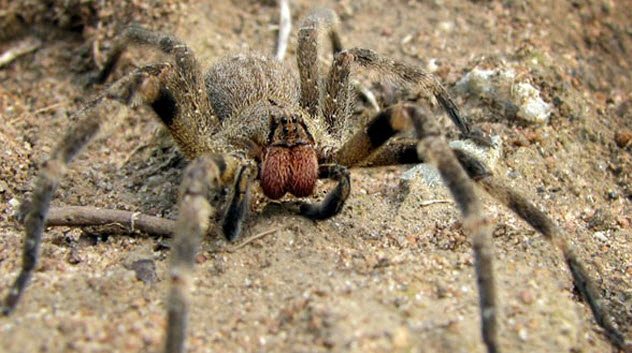
Most people avoid spiders like the plague, as arachnophobia is incredibly common. Still, there are spiders in the world, and occasionally, they cross paths with a human. In most cases, the spider will get out of your way, but they will bite you if they feel threatened. Most spider bites hurt like any other insect bites, but not all of them.
The most dangerous spider bite in the world comes from the Brazilian Wandering spider. They are aggressive and highly venomous spiders found in Brazil and other parts of Central and South America. If they feel threatened, they will bite you, and they have the option of delivering none, some, or all of their venom reserves.
Regardless of the amount of envenomation, a bite from a Brazilian Wandering spider is intensely painful. Its fangs dig deep into your flesh, causing intense burning pain at the site. You will then experience sweating and goosebumps. After 30 minutes, you may experience changes in blood pressure, nausea, abdominal cramping, hypothermia, blurred vision, and symptoms resembling shock.
In some cases, a male will have a long-lasting and painful erection. The most severe bites can result in death if they go untreated, but these spiders rarely inject enough venom to do that. Instead, they reserve some for later and give you an excruciating bite you won’t soon forget.
8 Gila Monsters
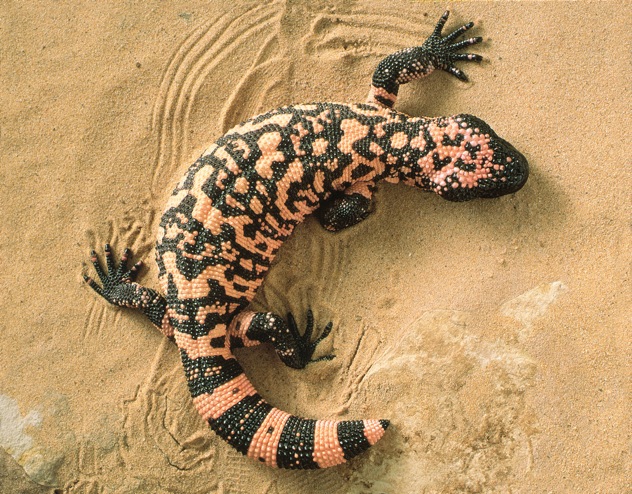
Gila Monsters are the only venomous lizards found in the United States, though they can be found as far south as Sonora, Mexico. Typically, these animals are slow-moving and sluggish in nature, so your odds of being bitten by one aren’t high.
Gila monsters are relatively long, growing up to 14 inches (36 cm) in length, though about 20% of that is their tail. They have a large head with small eyes and a strong snout. They hunt small mammals, birds, snakes, insects, and any carrion they find.
They produce venom in glands at the end of the lower jaw, which they propel into their prey. When they do this, a Gila Monster purposefully chews on whatever they’re biting to ensure their venom goes where they want it. You may want to read that again — they don’t bite and withdraw — they chew with long, sharp teeth.
Those teeth can grab hold of tissue, and removing a biting Gila monster is no easy task. They’ll hold on for as long as they want to, and it’s going to hurt. A lot. Gila monster venom is dangerous, though it’s highly unlikely to result in death. Its intended prey succumb to it, but for a human, it’s just going to be a horribly painful experience.
7 Bullet Ants
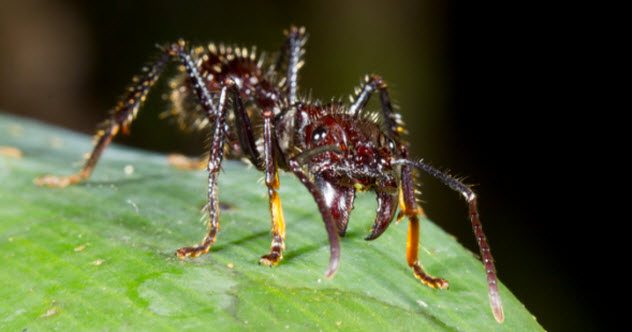
In the rainforests of Central and South America, there exists a species of ant commonly known as the Bullet Ant. They are large ants that grow to as much as 1.2 inches (30 mm) in length, making them one of the largest ant species.
Bullet ants occasionally come into contact with people, and when this happens, someone is likely to get bitten. That’s the last thing you want because they register the highest on the Schmidt Pain Index with a rating of 4.0+.
Schmidt described the pain from a bullet ant bite as “Pure, intense, brilliant pain. Like walking over flaming charcoal with a three-inch nail embedded in your heel.” A bite is undoubtedly painful, and many have compared it to being shot, hence the name.
You’ll experience intense pain at the bite location, which will come in “waves of burning, throbbing, all-consuming pain that continues unabated for up to 24 hours.” Fortunately, a bullet bite won’t kill you (unless you’re allergic). Still, you’ll likely wish you were dead rather than experience that level of intense pain.
6 Monkeys

While people in the west aren’t too concerned with being bitten by a monkey anytime soon, they’re fairly common throughout South America and Asia. Monkeys are a problem in densely populated areas, including Brazil, India, and Indonesia, so there are more people in danger of a bite than you might think.
For their size, monkeys are strong, so you don’t want to be attacked by one. Their primary means of attack is through a bite, and most species have powerful jaws with sharp teeth. A bite from a monkey will result in tissue damage, but the most significant threat comes from bacteria and viral pathogens that call their mouths home.
Like most mammals, monkeys can carry and transmit rabies, which is 100% fatal if left untreated. Symptoms include hallucinations and partial paralysis, so it’s no picnic. Still, it’s also not necessarily the biggest threat, as it is treatable.
Monkeys can pass on Simian herpes via a bite. This can lead to encephalomyelitis, which leads to brain inflammation. It also comes with paralysis, loss of vision, and vomiting. The dangers are real, so if you’re ever bitten by a monkey, seek medical attention immediately.
5 Ticks
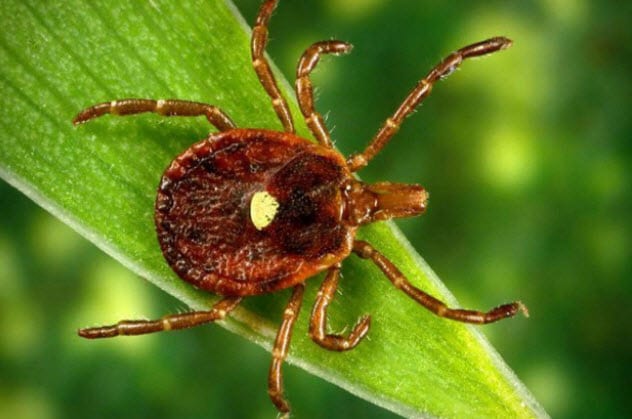
Nobody wants to have a tick nibble on them, but they’re more often seen as pesky parasites than potential threats. Interestingly, unlike everything else on this list, when a tick bites a person, they’re unlikely to feel it or even notice. Ticks inject an anesthetic into the skin as soon as they pierce it to avoid detection.
After they pierce the skin, a tick burrows its head as deep as possible, leaving some of its legs and most of its body outside. It then begins to feed on your blood, engorging itself. While the tick’s head is inside snacking on your fluids, it transfers some of its own into you, which is where the real problem lies.
Ticks can cause a myriad of diseases, depending on where you are in the world. Ticks can infect a person with Rocky Mountain Spotted Fever, Q Fever, Southern Tick-Associated Rash Illness, anaplasmosis, babesiosis, and Lyme disease, which is infected via the bacterium Borrelia burgdoferi.
Lyme disease is the biggest threat, most often brought by a tick bite. It can cause severe headaches, facial palsy, arthritis, tendon & muscle pain, heart palpitations, dizziness, and nerve pain, among other things.
4 Rattlesnakes
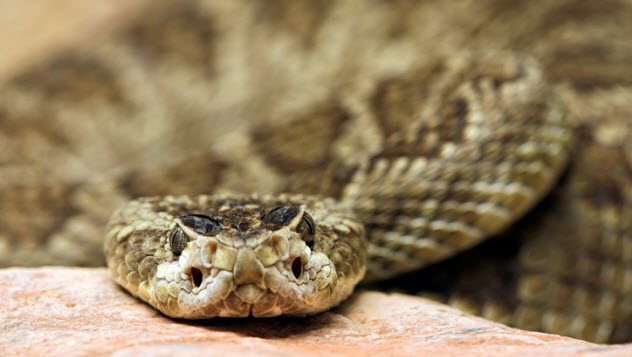
Getting bitten/struck by any snake will be a memorable event in most people’s lives. After all, snakes carry two long hypodermic needles capable of delivering a large amount of venom. The fangs will hurt you, to be sure, but the real pain comes from the venom, and it can be brutal.
Beyond the potentially fatal types of venom, there are some that cause severe tissue damage and pain. The worst of this is arguably found in rattlesnakes, which inject venom with some of the highest levels of toxicity found in any snake in the Western hemisphere.
When the venom is injected, it immediately goes to work on your tissue and blood. It is hemotoxic, so it results in coagulopathy and necrosis. Essentially, wherever it bites you, your tissue begins to die while it’s still a part of you and your blood forgets how to clot properly.
You can die from a rattlesnake bite should it get you somewhere especially dangerous like your jugular, but most bites aren’t fatal. Antivenom exists, and if it’s administered within six to 48 hours after envenomation, you and your tissue should be safe. Regardless, severe pain is only one of the many gifts a rattlesnake is willing to give its victims.
3 Tsetse Fly
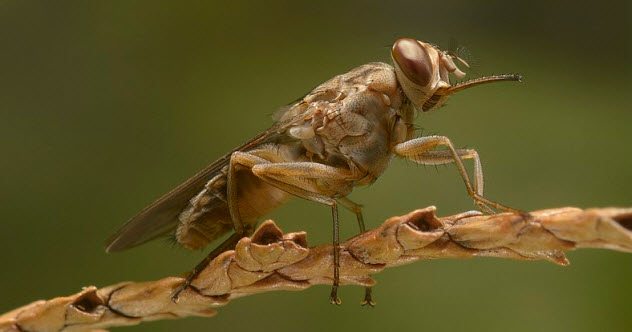
For many people throughout the world, a fly is little more than a pest. Things are a little different in Sub-Saharan Africa, which is where you might encounter the Tsetse fly. These small flies are about the same size as a housefly, but unlike the peskier variety, Tsetse flies bite and feed on blood.
When you’re bitten by a Tsetse fly, you’ll experience some mild pain and irritation at the site, but that’s not the real problem. Like so many insects, the Tsetse fly is a vector. It carries a parasitic organism that causes African trypanosomiasis, otherwise known as African Sleeping Sickness.
If you contract African Sleeping Sickness, you’re going to experience neurological and meningoencephalitic (resembles meningitis and encephalitis) symptoms. These can lead to changes in behavior, a loss of coordination, and the disruption of sleep cycles, hence the name.
Treatment is typically successful if administered before neurological symptoms manifest. Over the years, it has become easier to treat, reducing the number of fatalities, but they still occur. If left completely untreated, the disease is 100% fatal, and thousands succumb to it every year.
2 Humans

Yes, humans (not zombies) are one of the most dangerous things that can bite you. Of course, this isn’t to say that a toddler biting another on the playground is necessarily dangerous outside the tissue damage. Still, a bite from a human can be life-threatening for several reasons.
People have around 700 species of bacteria in their mouths, with the average person housing between 20 and 72 different types. While they’re safe swimming in our saliva, they can cause problems inside the bloodstream. Other animals transmit various threats, but not everything carried by an animal can infect a human.
The problem with a human biting another is that any disease the biter carries can infect the victim. This includes everything from rabies and tetanus to hepatitis and HIV. On top of that, you’ll likely also have an infection spreading from the bite location.
On the one hand, a human bite can deliver a potentially fatal disease and an infection. Still, on the other hand, it’s not the biggest threat out there. After all, there aren’t many people running around snacking on other folks. Still, if you somehow find yourself on another person’s menu, you’re going to need to seek medical assistance immediately.
1 Mosquito
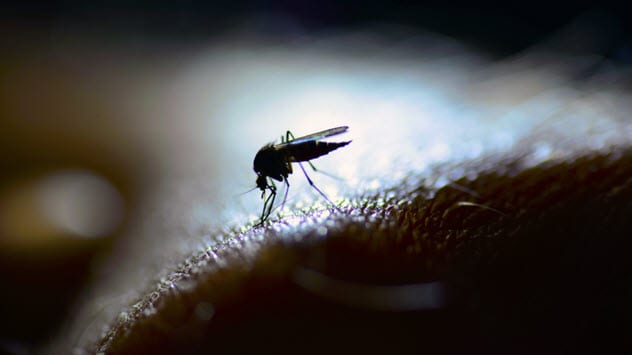
When a mosquito bites, it’s through a highly specialized mouth that includes six parts. You may think they just stab their proboscis into the skin and start sucking blood, but they only do this after their mandibles and maxillae are used to pierce the skin. So, in a way, they do bite down on you, though you’d never feel it.
Mosquito bites don’t often register in the host until they’re done, which is why it’s usually too late to stop them once you notice. Despite their ability to mask the pain from their victim, the bite itself isn’t the biggest threat brought by these little bloodsuckers.
Mosquitoes are often cited as the most dangerous animals in the world, and that’s not an unearned distinction. They are prolific vectors capable of transmitting a host of diseases, including Dengue fever, chikungunya, yellow fever, Zika virus, West Nile virus, Japanese encephalitis, and malaria.
Ultimately, malaria is the most dangerous for people, as it causes some 400,000 deaths every year. Mosquitoes kill more humans than any other animal (including ourselves), so it’s not as if it’s only a minor annoyance. For many parts of the world, it’s a constant and deadly threat.








